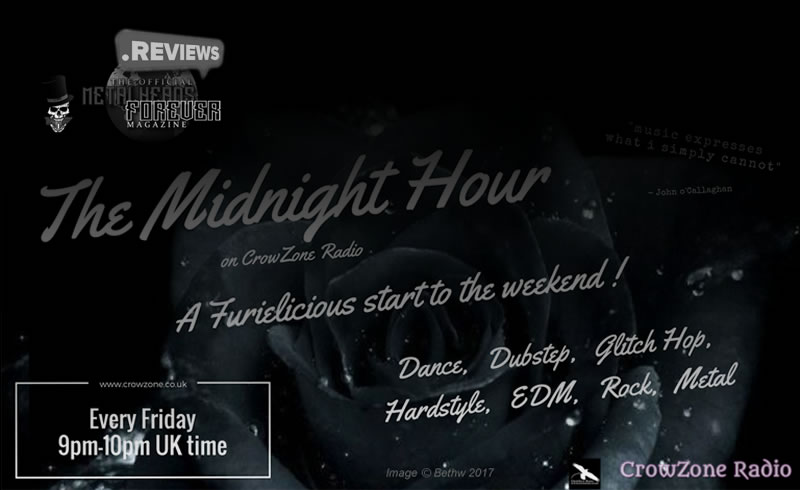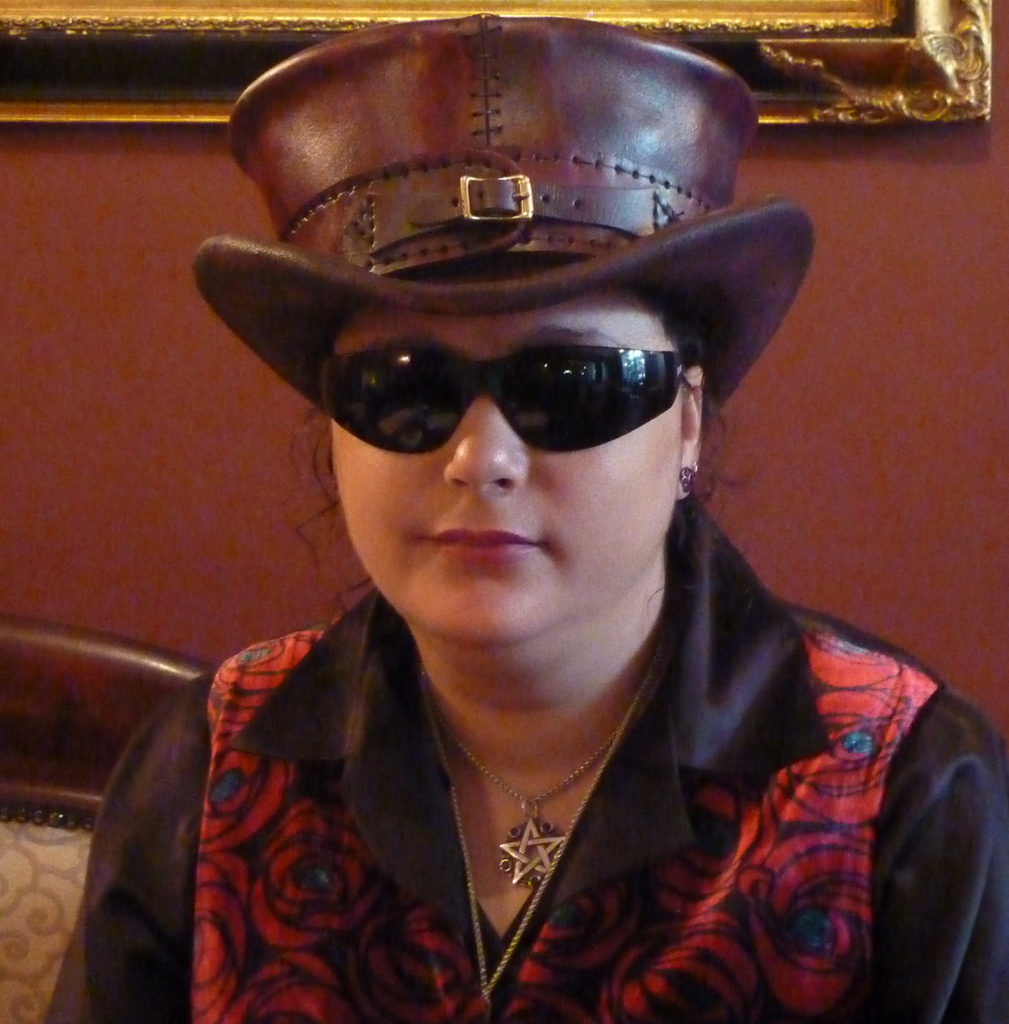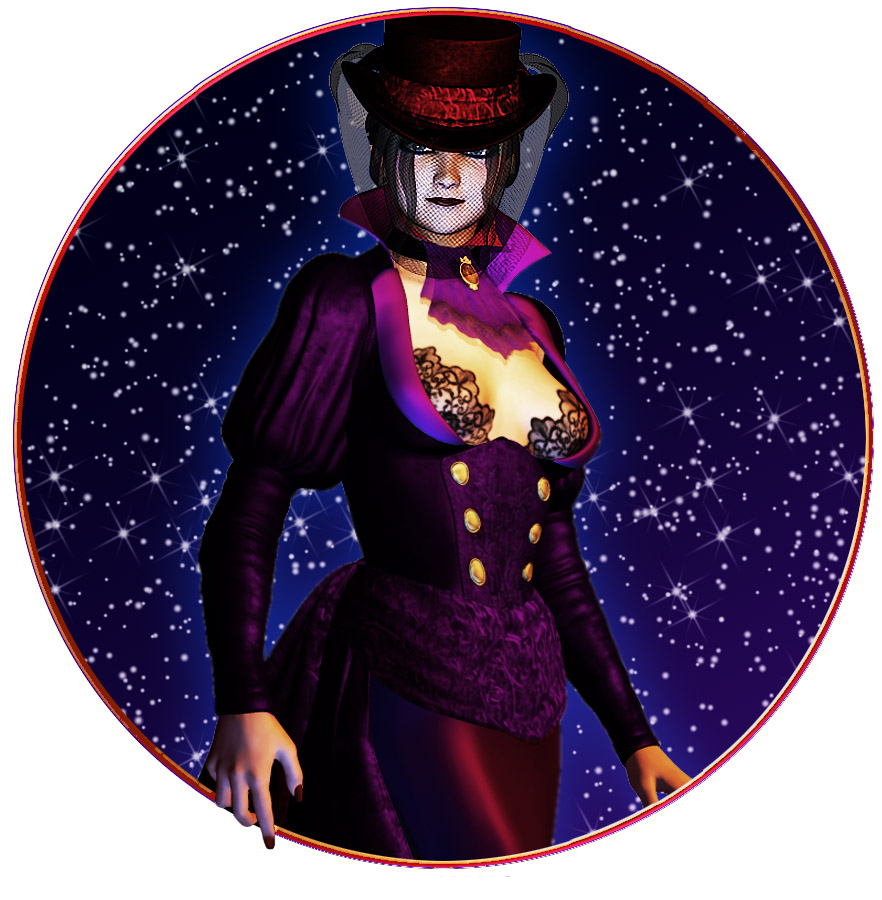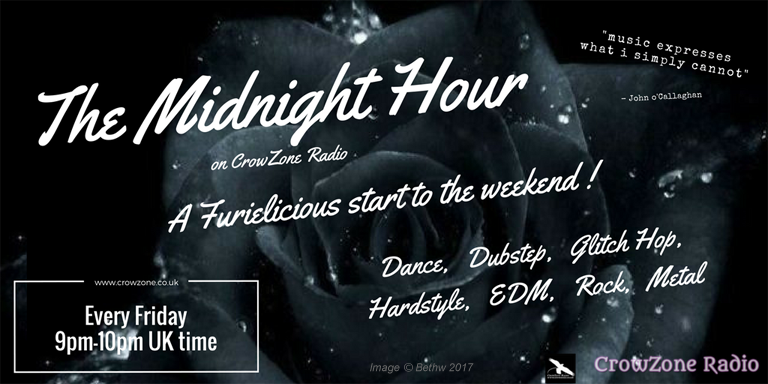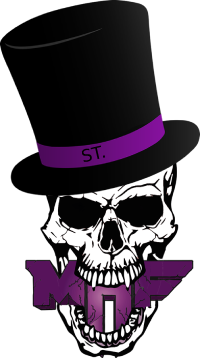“SPIN GODDESS” by Michael Aronovitz
Female Rock-Jockeys Writing the History of Metal as it Happens
Midnight Furie and The Pleasure Principal
It comes down to the question of why we listen to music in the first place, and the baseboards, bare bones, grass roots, and primary semiotics tell us that it finally has nothing to do with the packaging. That part is only a collection of colorful signifiers that make metaphors for the effect we feel in the blood. In the end we choose the various banners and logos, stylistics, cosmetics, and psycho-social presentations as rhythmic release points. Period. Regardless of “genre,” bands are all made up of exotic street-poets that reflect and act out our super-egos, and it all comes down to what pictures we prefer in our heads while we move through the timeline.
I like metal. Why? Because the guitar work is superior. Because I write horror, and the two art forms are blood-brother, because I can’t dance a fucking step, yes, it’s all of the above yet it’s also none of the above. As for the latter, when you get to the nuts and bolts of the issue, all the way down to my own grass roots and personal semiotics, I like metal simply because it makes me feel good. I like metal because my pulse mirrors the rhythm, and it paints me into my life-movie in a way that makes my heart swell.
Others color their world differently, and this article is more about people creating landscapes than the tools used for the particular excavation. Trigger points. In the end, all music is really the same. There are notes and measures, rests and codas, techniques and production, lights, camera, action.
I like metal, because I can “see” it. I will swear to you, right here and now, that “Lick it Up” by Kiss syncs perfectly the tempo of the surroundings like some freaky, magical soundtrack no matter what you are looking at or where you are seeing it from: the car, the roof, or your couch with the Sunday football game reflecting off your face with the volume off and the stereo cranked. I’ll also bet you a million dollars that someone who enjoys complex EDM would swear that same Kiss song slows everything down, making all the visuals appear sluggish, garish, and awkward. Of course. To each his own, we all know that cliché because it’s so obvious and true, but my fascination has always been about the perception itself. Because in the end, I can’t figure out why “Lick it Up” by Kiss doesn’t rock everyone’s world like it rocks mine, or more specifically, why it doesn’t offer everyone the same optics, the same sound effects, and the feelings I get straight down through my backbone.
When I hear metal and hard rock I don’t hear metal and hard rock. I feel the world breathe.
When my son was six, he was in love with one of my old faves, Foreigner, the debut record. I asked him why he liked it so much, and he didn’t talk about the diversity of the songs, the powerful vocal, the tasteful guitar, or the high end, silvery production on the drum tracks. He said simply,
“It feels like an ice cream party that goes on forever.”
This has more meaning in the end than marveling over a quick pentatonic scale unleashed by Paul Gilbert or the manner by which one of Katy Perry’s background dancers executes a clever combination.
It’s all about the way it moves your emotions, what it makes you see in your mind’s eye, and how that inevitably helps you craft your mural. I am of firm belief that the kaleidoscope of our sentiments is awakened by different kinds of music, those which command all the parts and parcels like a huge pendulum finally coming to rest at pure joy. That goes for the one extreme that would swing toward our wistfulness, wrath, darkness, or skepticism just as much as when we arc back toward ecstasy and climax, mosh pit or dance floor, pick your poison, your message, your cause…your rush, your jam, your groove, your release. All joy.
I recently listened to a radio show coming from the UK, called The Midnight Hour, hosted by the smooth talking hoarse-whisperer, Midnight Furie, CrowZone Radio, Fridays 9 PM UK time, 4 PM eastern standard here in the U.S. The show kicked off with Fergalicious by Fergie, and while I am not necessarily into Hip-Hop/Rap, I have to admit I enjoyed it, especially since Midnight introduced it by calling herself “Furi-e-licious” in this low tone, both strap line for the show, and tie-in to the first number, that in itself somehow made it seem she was the perfect guide, that I was a part of a crowd, going out at night to explore the richly shadowed streets of some fairytale dream world where everyone would interpret together the rhythm of the night. The second tune, Turn On by DJ Amas, was again dance-themed, Glitch-Hop style, with such bottom and swag I couldn’t help moving a bit in my office chair. Again, I am not a dance-guy, but for a moment I felt like one, like Midnight Furie had somehow reorganized the smooth semi-darkness so it would take me in without judgement or criticism.
Between the third song, Kreatine by Adam Sky (Big Room) and We are Zombies by Vinioci & Anthony Gerrard (Electro House), Midnight said “There’s a secret hidden theme for tonight’s show,” and I must admit I was intrigued. And as the dance music progressed to a more intensive vibe, less commercial and more Avant Garde, so then did our mysterious host become more cryptic, with comments like “Flirty-Gertie has bypassed my parental controls,” and “Let me see you go, zoners,” that which I later gathered to mean “CrowZoner’s.”
Oh, I was indeed “zoned.” I was mesmerized and grounded, yet set free and flying, and then something wonderful happened.
At the halfway point in the show, it slowly became clear that the music was evolving, hardening, becoming sweet and specific, hard and prolific, and here it was most clear to me that our Spin Goddess was, and is, a master of her craft. From D-Block & S-te-Fan’s Eye of the Storm to Delete’s Until We Die Ft. Nolz, the theme evolved to rebellion, and I felt my groove move from shoulders to arms, head-bop to head-bang, and when Midnight Furie slipped us oh-so-smoothly into Born Again by Thousand Foot Krutch and (among others) Living Dead Girl by Rob Zombie and The Animal Inside by Nita Strauss and We Start Wars, it was clear that Midnight Furie had done the impossible. I am not really saying she made a wonderful hybrid of dance music and metal, though it is more than clear that she did. I am not really claiming she was making a political statement about dancers and rockers, pointing out how similar they’ve always been, though she successfully manufactured that bold illustration.
I’m saying that Midnight Furie solved the Pink Floyd paradox with her own specific brand of what I referred to in my title as “The Pleasure Principle.” In March of 1973, Floyd came out with what would become one of the top selling rock albums in history: The Dark Side of the Moon, and while the band made an attempt with this particular work to present something more literal than the material that populated their prior albums, the song and title still left room for a universe of complicated interpretations. It is commonly agreed that the famous title is a broad allusion to madness, but like all great works of art, it yields to us the opportunity to write our own text based off of the talking point. Here, that becomes relevant, in that Midnight Furie has somehow brightened both sides of the moon.
In terms more concrete, this particular radio host has uncovered the secret of uniting people wired for different types of music, therefore developing a mechanism through which we can all read the environment collectively, for one sweet hour. To advance this paradigm through more tangible analogy, I might propose that the logico/mathematical hemisphere of the brain is to its opposite side that would favor creativity and emotional development, like dance music is to metal. Until now, it was never clear as to the way either of these “halves” could co-exist except on “two sides” with a fence running down the middle, but Midnight Furie has solved it, leading off with the one in clear compliment of the other. On technical grounds, it is evident that she has made close study of “beat matching, the key of the [given] track, [and] bpm,” and in terms of influencing our perception, she brings it to us through hoarse whispers, making us a band of brothers and sisters, walking together along the damp cobblestones, making castles of the surrounding tenements and a chorus of the fog.
In The Midnight Hour, all of the dance songs match up with the metal songs, and the “secret theme” is sixty minutes of bliss. No one is left out. No closed doors, no wall flowers. In terms of straight history, Midnight Furie began crafting the idea for this module years ago when a colleague introduced her to “Cradle of Filth,” which she loved, even though her friends challenged her that being a “girl” she wouldn’t be able to “hack this” sort of hard-edged, heavy-assed metal. On November 25th, 2002, she saw Alice Cooper with the Monsters of Rock at Cardiff International Arena, in Cardiff, South Wales, and was mesmerized. I am sure there are a thousand stories about a thousand dance music scenarios she could relate to us for comparison, but maybe it’s best to leave that for the show. It seems she is an expert at slowly and lovingly peeling petals off the proverbial rose in order to expose inner treasures, and it would appear almost impolite to “unpack” everything about her influences here in a blast of cold exposition.
In terms of the station itself, Midnight Furie found CrowZone back in 2014, while taking an online course in Community Journalism and meeting through a friend, Steve Howe, who was inspired by The Kington Langley Scarecrow Festival which he and his wife had run for fifteen years. Now, Midnight Furie dazzles us every Friday night, wearing dark glasses and expressive hats from her tasteful collection, looking like a product of the 1920’s, Victoriana, and Steampunk. And she delivers. Soundtracks. Portraits that create a new sort of dream-realism.
Midnight Furie has lit up both sides of the moon, finally making a collective sense of two otherwise drastically different forms of musical art. Or maybe she’s actually darkened the whole damned thing, genre and style, preference and timeline…and sweetened it into a wonderful twilight where her listeners can take two otherwise opposing styles of expression, and together, formulate one great mosaic.
Michael Aronovitz is a horror author who has published three novels, two collections, more than thirty short stories, and a number of horror and metal reviews. His first novel “Alice Walks” will come out in E-book form through Cemetery Dance Publications this summer. His latest novel “Phantom Effect” can be seen on Amazon here: http://tinyurl.com/jcg59wo
Michael Aronovitz / MHF Magazine

